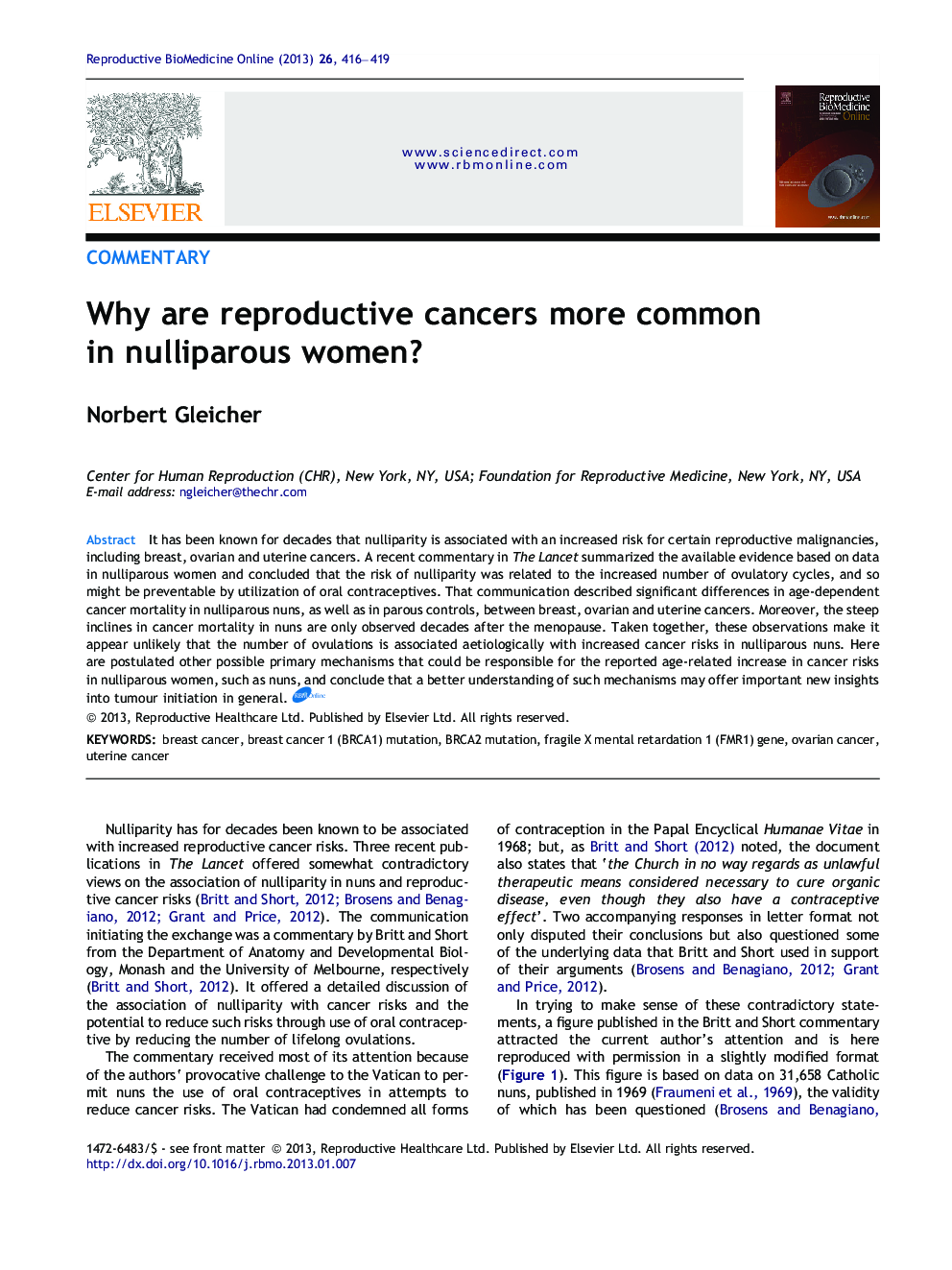| Article ID | Journal | Published Year | Pages | File Type |
|---|---|---|---|---|
| 6189113 | Reproductive BioMedicine Online | 2013 | 4 Pages |
It has been known for decades that nulliparity is associated with an increased risk for certain reproductive malignancies, including breast, ovarian and uterine cancers. A recent commentary in The Lancet summarized the available evidence based on data in nulliparous women and concluded that the risk of nulliparity was related to the increased number of ovulatory cycles, and so might be preventable by utilization of oral contraceptives. That communication described significant differences in age-dependent cancer mortality in nulliparous nuns, as well as in parous controls, between breast, ovarian and uterine cancers. Moreover, the steep inclines in cancer mortality in nuns are only observed decades after the menopause. Taken together, these observations make it appear unlikely that the number of ovulations is associated aetiologically with increased cancer risks in nulliparous nuns. Here are postulated other possible primary mechanisms that could be responsible for the reported age-related increase in cancer risks in nulliparous women, such as nuns, and conclude that a better understanding of such mechanisms may offer important new insights into tumour initiation in general.
